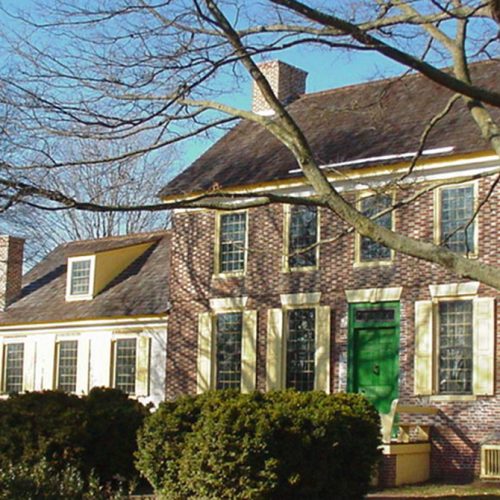
A lot of history happens when you’re the first state. From our biggest cities to our smallest towns, Delaware is home to some pretty amazing historic buildings. The Bayshore Byway is no exception.
While driving along the 100 mile route visitors see stately homes, humble dwellings, and remarkably preserved agricultural buildings that each tell a different story from the state’s rich history.
Historic Architecture
History
Photo Spots
(North to South)
(South to North)
The town, of New Castle, established in in 1651, boasts the distinction of being the spot where William Penn first landed in the United States. The cobblestone streets, brick sidewalks, and Colonial architecture immerse visitors in the past. For a special treat plan your trip to coincide with “A Day in Old New Castle” the Nation’s oldest continuous house and garden tour.
New Castle has a wealth of house museums to visit.
Finally, visit the New Castle County Courthouse Museum. Built in 1732 it served as Delaware’s first court and state capitol. Here in 1776, New Castle, Kent and Sussex counties declared their independence from Pennsylvania and England creating the Delaware State. It is also the of 1848 trial of Thomas Garrett and John Hunn.
The New Castle Court House Museum has exhibits on the Underground Railroad including Thomas Garrett, John Hunn, the Hawkins family and Samuel Burris, and is the welcome center for the First State National Historical Park.
The next stop on our trip is Delaware City where you can catch the ferry over to Fort Delaware, located on Pea Patch island.
The fort is open 8am-4pm from March to November. Originally built to protect the ports of Wilmington and Philadelphia, Pea Patch Island also became a Union prison camp during the Civil War, housing up to as many as 12,595 Confederate prisoners of war at one time. Fort Delaware became a state park in 1951.
Today, costumed interpreters take you back to the summer of 1864 — tour the parade ground, officers’ quarters, barracks, kitchen, blacksmith shop and ordnance room, hear stories of great escapes, and watch as the Fort’s Columbiad cannon fires a live gunpowder charge. Engage with fort historians dressed in period clothing, and hear stories of those who lived at the fort in 1864.
Fort Delaware is well-known for “ghostly” activity and has been featured on Ghost Hunters and other television shows. Paranormal tours are offered in the fall.
For those interested in more military history, you can take an additional ferry to Fort Mott in New Jersey.
Once you’re back on the mainland, head south to Odessa for lunch at Cantwell’s Tavern, one of five buildings stewarded by the Historic Odessa Foundation. Visitors can tour the buildings and their gardens for just $10 / person.
If you’re in town the first Saturday after Labor Day, stop by the Historic Odessa Brew Fest. At the western edge of town is the Appoqunimink Friends Meetinghouse, one of the smallest Quaker meeting houses in the country. Members of the meeting were active in the Underground Railroad, and Harriet Tubman may have hidden here.

340 Kitts Hummock Rd.
Dover, DE 19901

Leaving Odessa the Byway winds through the tidal marshes and cedar swamps of southern New Castle and northern Kent Counties. Due to the low elevation, areas along this portion of the byway are prone to flooding. However, the drive is beautiful and travelers will pass through the historic towns of Leipsic and Little Creek as well as farmland on the outskirts of Dover.
Some sites along this portion of the trip which are not open to the public are the Wheel of Fortune House, The Octagonal Schoolhouse, and the Old Stone Tavern.
Our next stop is the John Dickinson Plantation, which was the Delaware residence of one of the Nation’s founders and a signer of the Declaration of Independence. The plantation is open Tuesday-Saturday from 11am to 4:30, and visitors can take a tour of the house, reconstructed slave quarters, and a some agricultural outbuildings.
A short 8 mile drive takes us to our final stop – Barratt’s Chapel, Museum & Cemetery, located just south of Frederica.
The church was constructed in 1780 and is considered the “Cradle of Methodism”.
The museum contains history exhibits, archives, and artifacts relating to Methodism.
There is also a large, well-preserved cemetery that is open to visitors.
Delaware Greenways extends its thanks to the Delaware Department of Transportation, Delaware Department of Natural Resources and Environmental Control and Delaware Tourism Office for their generous support in the development of the Delaware Bayshore Byway website.